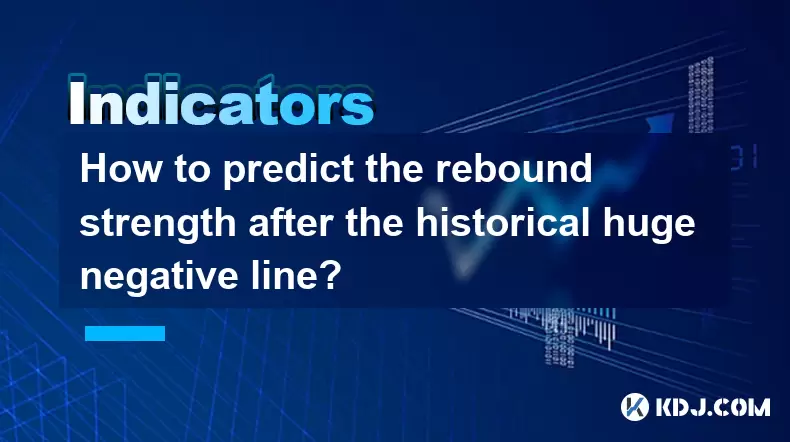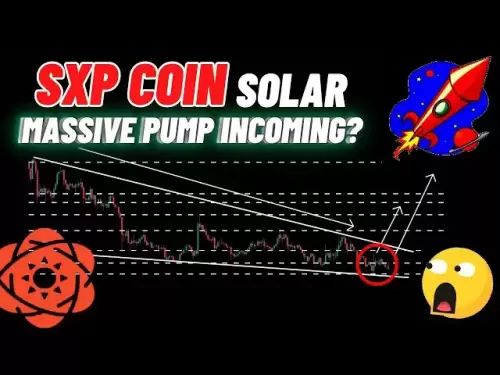-
 Bitcoin
Bitcoin $117500
2.04% -
 Ethereum
Ethereum $3759
3.02% -
 XRP
XRP $3.171
3.30% -
 Tether USDt
Tether USDt $1.000
0.03% -
 BNB
BNB $782.4
2.52% -
 Solana
Solana $187.2
5.62% -
 USDC
USDC $0.0000
0.02% -
 Dogecoin
Dogecoin $0.2380
5.26% -
 TRON
TRON $0.3175
1.07% -
 Cardano
Cardano $0.8227
4.03% -
 Hyperliquid
Hyperliquid $44.50
5.44% -
 Sui
Sui $4.020
10.07% -
 Stellar
Stellar $0.4396
6.28% -
 Chainlink
Chainlink $18.32
4.55% -
 Hedera
Hedera $0.2628
10.71% -
 Bitcoin Cash
Bitcoin Cash $554.8
4.90% -
 Avalanche
Avalanche $24.20
4.60% -
 Litecoin
Litecoin $113.7
2.31% -
 Shiba Inu
Shiba Inu $0.00001413
5.99% -
 UNUS SED LEO
UNUS SED LEO $8.984
0.11% -
 Toncoin
Toncoin $3.326
7.22% -
 Ethena USDe
Ethena USDe $1.001
0.00% -
 Uniswap
Uniswap $10.49
4.56% -
 Polkadot
Polkadot $4.092
4.02% -
 Monero
Monero $326.6
1.30% -
 Dai
Dai $1.000
-0.01% -
 Bitget Token
Bitget Token $4.570
2.49% -
 Pepe
Pepe $0.00001267
5.10% -
 Aave
Aave $297.3
3.10% -
 Cronos
Cronos $0.1344
4.10%
How to predict the rebound strength after the historical huge negative line?
A historical huge negative line in crypto often signals oversold conditions, and when combined with bullish patterns like a tail or engulfing candle, may indicate a strong rebound.
Jun 28, 2025 at 11:14 pm

Understanding the Historical Huge Negative Line
In cryptocurrency trading, a historical huge negative line refers to a candlestick pattern where the price drops significantly within a single time frame, often accompanied by high trading volume. This type of movement can be triggered by macroeconomic news, regulatory changes, or sudden market sentiment shifts. Recognizing such a pattern is crucial for traders who aim to predict rebound strength, as these events tend to create oversold conditions that may lead to sharp recoveries.
The first step in analyzing rebound potential is identifying whether the negative line occurred at a key support level or after a prolonged downtrend. If it appears near historical lows or major psychological levels, the chances of a strong bounce increase significantly.
Technical Indicators That Help Predict Rebound Strength
Several technical indicators can assist traders in assessing how strong a rebound might be after a large negative candle:
- Relative Strength Index (RSI): An RSI below 30 typically indicates oversold conditions, suggesting a possible reversal. A quick recovery following a plunge into this zone may indicate strong buying pressure.
- Moving Average Convergence Divergence (MACD): A bullish divergence on the MACD histogram could signal an upcoming rally, especially if the histogram starts expanding upward while prices continue falling.
- Volume Profile and On-Balance Volume (OBV): A surge in volume during or after the negative candle suggests accumulation, which could foreshadow a strong rebound.
These tools should not be used in isolation but rather in combination with price action analysis to form a comprehensive view.
Price Action Patterns Around the Negative Candle
Analyzing the price behavior immediately before, during, and after the huge negative line can provide valuable insights into the likelihood and magnitude of a rebound. Look for the following patterns:
- Tail Formation: A long lower shadow on the negative candle suggests rejection of lower prices and potential for buyers stepping in.
- Bullish Engulfing Pattern: If the next candle completely engulfs the bearish candle and closes higher, it signals a strong reversal possibility.
- Immediate Follow-through: A rapid move back above the midpoint of the negative candle increases the probability of a robust recovery.
These patterns help confirm whether the selling pressure has truly subsided or if further declines are likely.
Historical Data Comparison and Market Context
One effective way to gauge the strength of a potential rebound is to compare the current situation with historical data from similar events. For example:
- Past Reactions After Large Red Candles: By analyzing how the same cryptocurrency responded after previous sharp declines, traders can estimate average bounce magnitudes and durations.
- Market Conditions: Was the drop part of a broader market selloff or isolated to a specific coin? Broader corrections tend to see slower recoveries compared to asset-specific dips.
- Bitcoin's Correlation: In most cases, altcoins follow Bitcoin’s direction. Checking Bitcoin’s position relative to its own support or resistance levels can add context to the expected rebound strength.
Using platforms like TradingView or CoinMarketCap historical charts, traders can perform comparative studies to refine their predictions.
Risk Management and Position Sizing Considerations
Even with a strong technical setup, predicting rebound strength involves uncertainty. Therefore, implementing proper risk management techniques becomes essential:
- Setting Stop Loss Levels: Placing stop losses just below the low of the negative candle helps protect against further downside surprises.
- Trailing Profits: As the price moves upward, trailing stops can lock in gains while allowing room for the rebound to develop fully.
- Position Sizing: Avoid allocating too much capital based solely on the expectation of a rebound. Smaller entries allow for flexibility if multiple attempts are needed to confirm a trend change.
This approach ensures that even if the rebound doesn’t materialize as expected, losses remain controlled and manageable.
Frequently Asked Questions
Q1: Can I use Fibonacci retracement levels to predict rebound strength after a huge red candle?
Yes, Fibonacci retracement levels can be applied effectively in such scenarios. After a sharp decline, key retracement levels like 50%, 61.8%, and 78.6% often act as potential zones where the price may find support and initiate a rebound.
Q2: How important is volume when assessing a potential rebound?
Volume plays a critical role. A huge negative candle followed by a spike in volume during the recovery phase usually confirms genuine buying interest. Conversely, low volume during a bounce may suggest weakness and a false rally.
Q3: Should I focus only on daily candles or consider shorter time frames as well?
While daily candles provide a broader perspective, analyzing 4-hour or 1-hour charts can offer better entry points. Shorter time frames help identify micro-structures and momentum shifts that may not be visible on longer intervals.
Q4: Is there a difference between a huge negative line in a bull market versus a bear market?
Yes, rebounds tend to be stronger and faster in bull markets because dips are often seen as buying opportunities. In contrast, bear market rebounds may lack conviction and are more prone to failure unless supported by strong fundamentals or news.
Disclaimer:info@kdj.com
The information provided is not trading advice. kdj.com does not assume any responsibility for any investments made based on the information provided in this article. Cryptocurrencies are highly volatile and it is highly recommended that you invest with caution after thorough research!
If you believe that the content used on this website infringes your copyright, please contact us immediately (info@kdj.com) and we will delete it promptly.
- Vaultz Capital's Bitcoin Bet: A Strategic Shift on the Aquis Exchange
- 2025-07-26 20:30:12
- Pi Coin, Wallet Features, and Coinbase: What's the Buzz?
- 2025-07-26 18:30:12
- Worldcoin, Punisher Coin, and the Meme Coin Mania: What's the Haps?
- 2025-07-26 18:30:12
- Conviction, Justice System, and Murders: A Look at Recent Cases and Shifting Perspectives
- 2025-07-26 18:50:11
- Shiba Inu, Remittix, and the Market Surge: What's the Hype?
- 2025-07-26 19:10:12
- Cardano Price, ADA Holders, and Leadership Criticism: What's the Real Deal?
- 2025-07-26 19:30:12
Related knowledge

What does it mean that the rebound is blocked after the moving average is arranged in a short position for the first time?
Jul 26,2025 at 10:51am
Understanding the Short-Term Moving Average ConfigurationWhen traders refer to a 'short position arrangement' in moving averages, they are describing ...

What does it mean that the parabolic indicator and the price break through the previous high at the same time?
Jul 26,2025 at 07:22pm
Understanding the Parabolic Indicator (SAR)The Parabolic SAR (Stop and Reverse) is a technical analysis tool developed by J. Welles Wilder to identify...

What does it mean when the price rises along the 5-day moving average for five consecutive days?
Jul 26,2025 at 08:07am
Understanding the 5-Day Moving Average in Cryptocurrency TradingThe 5-day moving average (5DMA) is a widely used technical indicator in cryptocurrency...

What does it mean when ADX breaks through 25 and +DI continues to rise?
Jul 26,2025 at 07:00pm
Understanding the ADX Indicator and Its ThresholdsThe Average Directional Index (ADX) is a technical analysis tool used to measure the strength of a t...

What does it mean when the price breaks through the 60-day moving average with a large volume but shrinks the next day?
Jul 26,2025 at 06:01am
Understanding the 60-Day Moving Average in Cryptocurrency TradingThe 60-day moving average (60DMA) is a widely used technical indicator in the cryptoc...

What does the sudden rise of ADX in DMI accompanied by +DI crossing -DI indicate?
Jul 26,2025 at 01:21pm
Understanding the DMI and Its Core ComponentsThe Directional Movement Index (DMI) is a technical analysis tool used to determine the presence and stre...

What does it mean that the rebound is blocked after the moving average is arranged in a short position for the first time?
Jul 26,2025 at 10:51am
Understanding the Short-Term Moving Average ConfigurationWhen traders refer to a 'short position arrangement' in moving averages, they are describing ...

What does it mean that the parabolic indicator and the price break through the previous high at the same time?
Jul 26,2025 at 07:22pm
Understanding the Parabolic Indicator (SAR)The Parabolic SAR (Stop and Reverse) is a technical analysis tool developed by J. Welles Wilder to identify...

What does it mean when the price rises along the 5-day moving average for five consecutive days?
Jul 26,2025 at 08:07am
Understanding the 5-Day Moving Average in Cryptocurrency TradingThe 5-day moving average (5DMA) is a widely used technical indicator in cryptocurrency...

What does it mean when ADX breaks through 25 and +DI continues to rise?
Jul 26,2025 at 07:00pm
Understanding the ADX Indicator and Its ThresholdsThe Average Directional Index (ADX) is a technical analysis tool used to measure the strength of a t...

What does it mean when the price breaks through the 60-day moving average with a large volume but shrinks the next day?
Jul 26,2025 at 06:01am
Understanding the 60-Day Moving Average in Cryptocurrency TradingThe 60-day moving average (60DMA) is a widely used technical indicator in the cryptoc...

What does the sudden rise of ADX in DMI accompanied by +DI crossing -DI indicate?
Jul 26,2025 at 01:21pm
Understanding the DMI and Its Core ComponentsThe Directional Movement Index (DMI) is a technical analysis tool used to determine the presence and stre...
See all articles

























































































